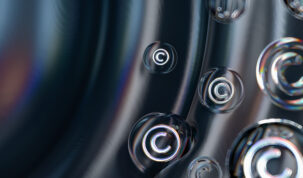It is a perfectly clear, crisp morning as I make my way from Washington DC’s Union Station, through a clean and perfectly trimmed Senate Park, to the white neoclassical palace that houses the United States Supreme Court. The wide pavement and massive stairs leading to the building’s entrance is filled with journalists, photographers and television crews gearing up alongside hundreds of gathered spectators. Inside, the Supreme Court is in session, hearing its first design patent case in 120 years.
What sparks such an unusual interest in the hearing of an IP case is the fact that this is one of the final chapters in the ultimate “super heavyweight” patent rumble, between the largest corporation in the US, Apple and the by far largest South Korean corporation, Samsung. This lengthy dispute has all the components necessary to attract the public’s eye: it concerns a category of products that basically everyone of us is using (on average 40 times per day), the design patents concerned are understandable and the patents cover the iconic design of the game changing iPhone.
The question that the Supreme Court agreed to hear is not that of infringement, which has already been settled in a final decision by the Court of Appeal for the Federal Circuit (CAFC). Instead, the court is reviewing the size of the damages, and in further detail, the relevance of a century old piece of legislation stating that the infringer in a design patent “shall be liable to the owner to the extent of his total profit”. This in practice means all profit generated by the infringing Samsung Smartphones (article of manufacture), and it is this wording that made the CAFC affirm the $400 million in damages awarded to Apple.
Samsung, as well as several academics, argue that a statement made by the US congress in 1887 that “it is the design that sells the article” (forming the basis for the above wording in the legislation), does not apply to complex products such as the iPhone. On the other side, Apple’s Chief Litigation Officer Noreen Krall, who by the way hired me to my first job in the IP industry, argues the opposite and stated that Apple’s “designers and engineers are distinguished by their originality” and that Apple “firmly believe that strong design patent protection spurs creativity and innovation”.
Knowing how dedicated Apple fans can be, and how much value the Apple customer places in the look and feel of the products, I am inclined to agree with Noreen and Apple. In many instances, I believe that originality and design are features that actually may trump the function of Apples products.
The Supreme Court’s decision is expected in early 2017. Whatever the outcome will be, i.e. if the Supreme Court confirms the principle of the “total profit” or chooses to interpret the law as meaning “total profit” attributed to the specific parts of the “article of manufacture” covered by the patent, the ruling will have a considerable impact on how the IP world views and values design patents.
Joacim Lydén, Awapatent Partner and temporary US Correspondent




